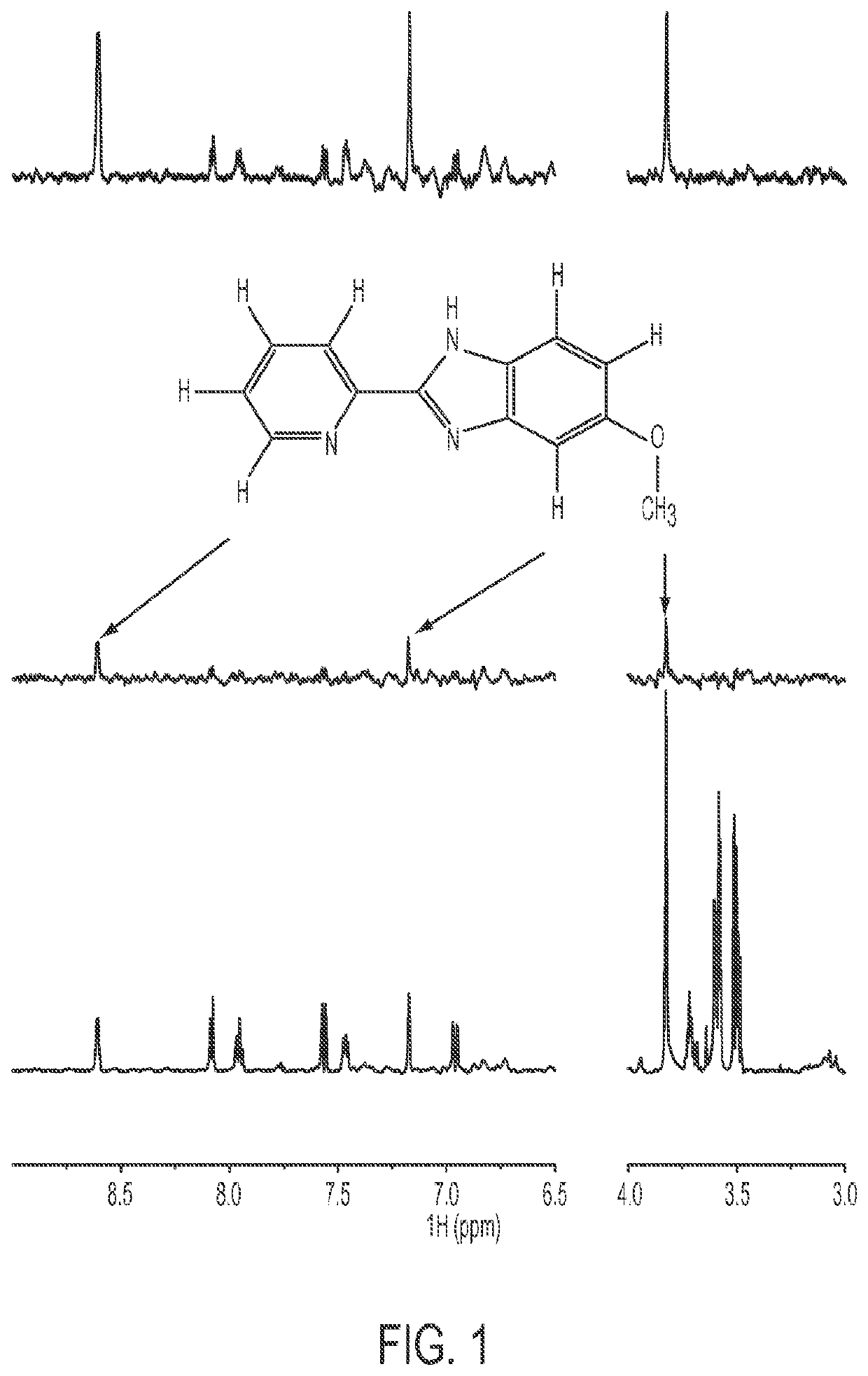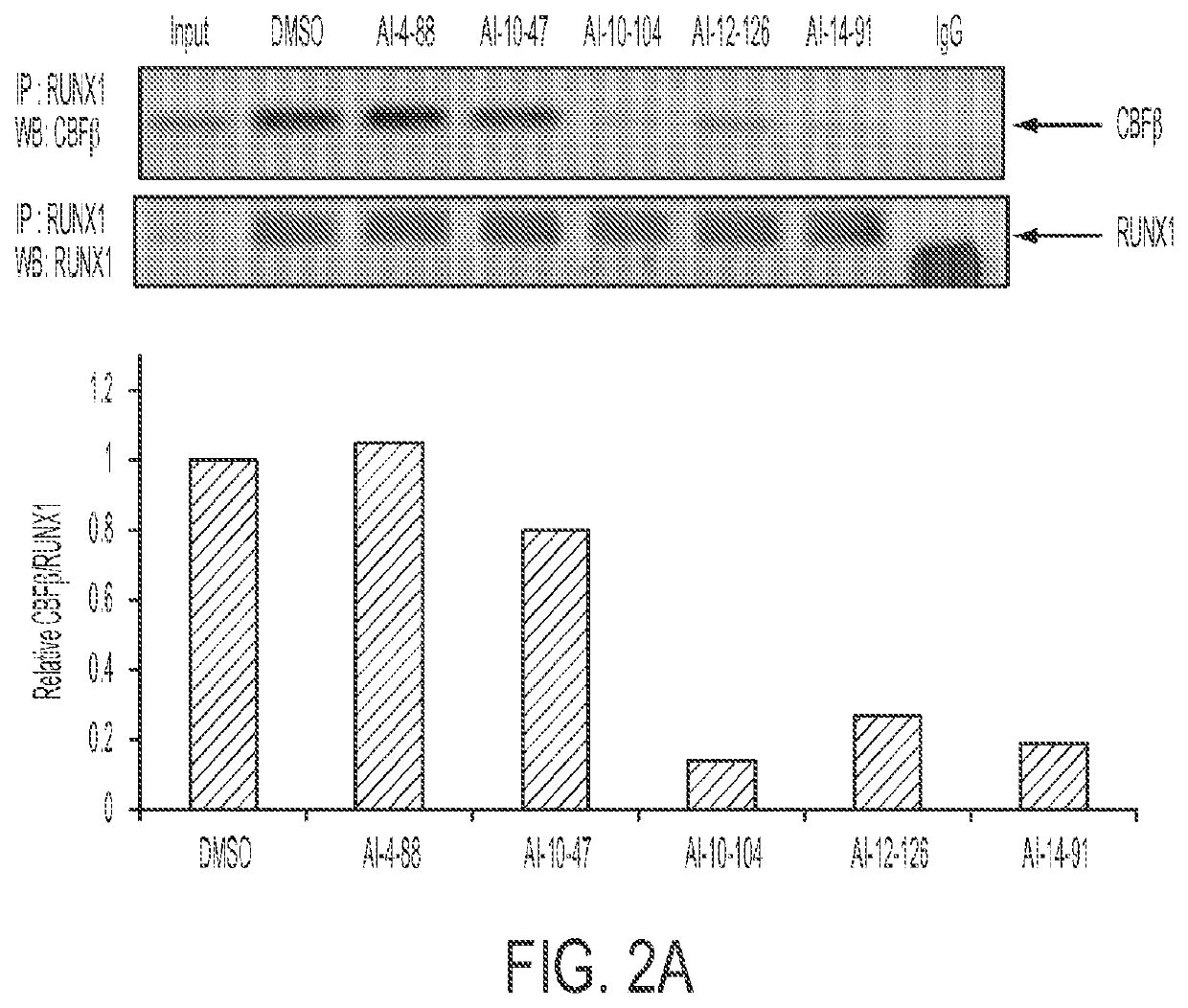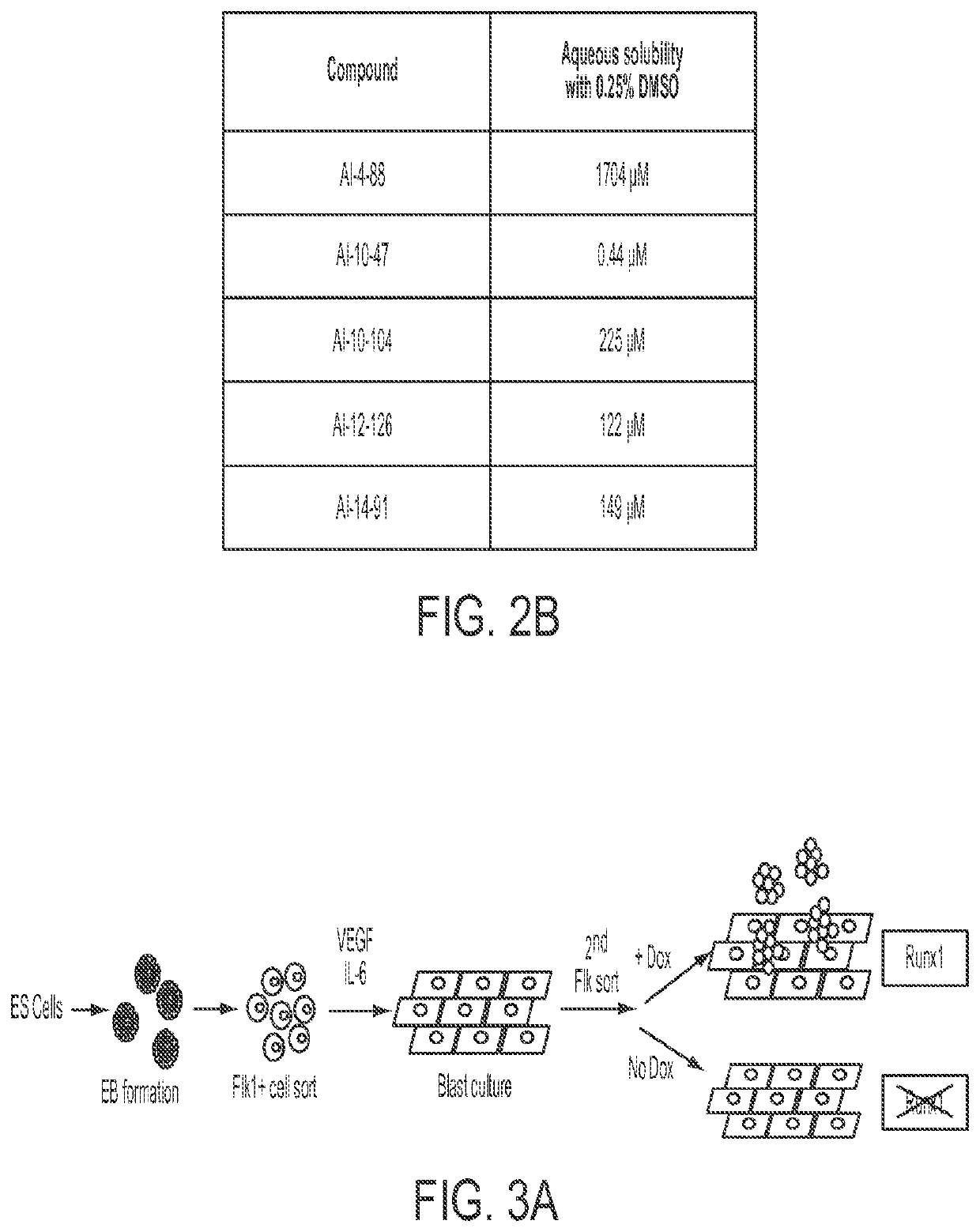Cancer therapeutics
a technology for cancer and treatment, applied in the field of cancer treatment, can solve the problem that the likelihood of success of targeting such interactions is very low
- Summary
- Abstract
- Description
- Claims
- Application Information
AI Technical Summary
Benefits of technology
Problems solved by technology
Method used
Image
Examples
example 2
Example 2.1: Synthesis of 3,5-Disubstituted Pyridine-2-Aldehydes and Benzimidazole Starting Materials
[0139]The following substituted pyridine-2-aldehydes, were prepared accordingly in multi-step synthesis by using appropriate intermediates as described previously.[0140]3-methoxypicolinaldehyde, CAS Registry Number 1849-53-2;[0141]3,5-dimethoxypicolinaldehyde, CAS Registry Number 1256790-69-8;[0142]3methyl 2-formylnicotinate, CAS Registry Number 25230-59-5;[0143]2-formylnicotinic acid, CAS Registry Number 23590-67-2;[0144]2-formylnicotinamide, CAS Registry Number 951924-56-4;[0145]3-(dimethylamino) picolinaldehyde, CAS Registry Number 1780942-71-3;[0146]3,4-dimethoxypicolinaldehyde, CAS Registry Number 142470-53-9;[0147]3-(pyrrolidin-1-yl) picolinaldehyde, CAS Registry Number 1707358-09-5; and[0148]5-hydroxy-3-methoxypicolinaldehyde, CAS Registry Number 1289039-21-9.
These pyridine-2-aldehydes were used in the preparation of compounds as described below and shown in Scheme 1.
example 2.2
cedure for the Synthesis of Substituted Benzimidazoles (Scheme 4)
[0149]To a solution of appropriately substituted aldehyde (1.0 mmol) and 2-nitro-5-(trifluoromethoxy)aniline (1.0 mmol) in ethanol (4 mL) and DMSO (0.2 mL, 5%), a sodium dithionite solution (0.52 g, 3 mmol in 3 mL water) was added. The reaction mixture was refluxed for 8 hours or followed by TLC until the completion of the reaction. The solvent was removed under reduced pressure, diluted with water, and neutralized with aqueous NH4OH solution. After usual work up the crude reaction mixtures were purified by flash chromatography by using appropriate solvent systems and evaporation of the solvents led to viscous compounds or solids. The slowly solidifying precipitate / viscous compounds were dissolved in a minimal amount of dichloromethane and triturated with hexanes, stirring overnight at r.t to get a clear solid compounds. The solid thus obtained was filtered, and dried under vacuum to give substituted benzimidazoles. Th...
example 2.3
of the Compounds in Table 2
[0152]Table 3 shows the IC50 values for the compounds in Table 2, as well as compounds Al-4-57 and Al-10-47, determined using a FRET assay as described above. “NA” indicates not active. Previous work on the development of small molecule inhibitors that are specific for CBFβ-SMMHC showed that Al-4-57 has a short half-life in mice with loss of the methyl group on the methoxy functionality being the resulting metabolite (Illendula, A. et al. Chemical biology. A small-molecule inhibitor of the aberrant transcription factor CBFbeta-SMMHC delays leukemia in mice. Science 347, 779-784, doi:10.1126 / science.aaa0314 (2015)). However, administration of Al-10-104 to mice via intraperitoneal (IP) injection resulted in significant sedative effects that were lethal at high doses. Reasoning that this effect depended on the ability of the compound to cross the blood brain barrier (BBB), compounds Al-12-126 and Al-14-91 have appended morpholine ring substituents to the 5 po...
PUM
| Property | Measurement | Unit |
|---|---|---|
| acid addition | aaaaa | aaaaa |
| solubilizing | aaaaa | aaaaa |
| affinity | aaaaa | aaaaa |
Abstract
Description
Claims
Application Information
 Login to View More
Login to View More - R&D
- Intellectual Property
- Life Sciences
- Materials
- Tech Scout
- Unparalleled Data Quality
- Higher Quality Content
- 60% Fewer Hallucinations
Browse by: Latest US Patents, China's latest patents, Technical Efficacy Thesaurus, Application Domain, Technology Topic, Popular Technical Reports.
© 2025 PatSnap. All rights reserved.Legal|Privacy policy|Modern Slavery Act Transparency Statement|Sitemap|About US| Contact US: help@patsnap.com



